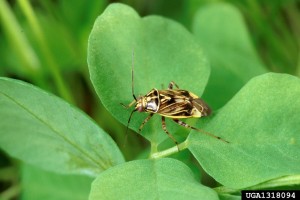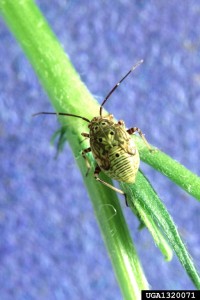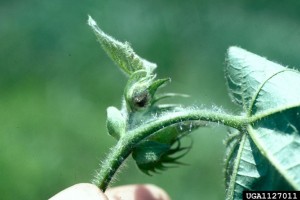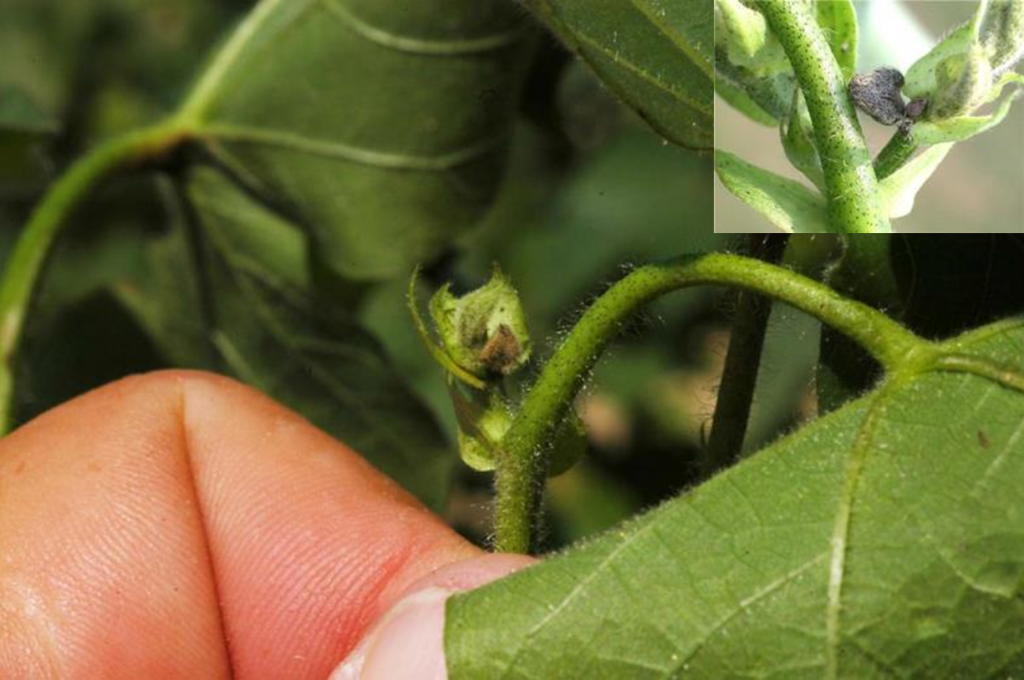A few areas have reported tarnished plant bugs infesting cotton. Although plant bugs are an uncommon and sporadic pest of Georgia cotton, failure to detect economic infestations can result in yield loss and delays in maturity. Be sure to monitor square retention and be observant for plant bugs when walking fields. Sprays should only be applied when needed. Treatment is recommended if plants are retaining less than 80 percent of pinhead squares and numerous plant bugs are observed. It is a good habit to periodically pull plants and monitor first position square retention on the whole plant. Our goal is to retain at least 80 percent of all first position squares at first bloom. We have had a few questions on thresholds when using 15 inch diameter sweep nets to sample plant bugs. Entomologists in the Mid-South have conducted extensive field trials evaluating thresholds for plant bugs during recent years. Below are thresholds recommended in Mississippi for tarnished plant bugs:
First 2 weeks of squaring:
Drop Cloth: 1 plant bug/6 row ft Sweep net: 8 bugs/100 sweeps
Third week of squaring through bloom:
Drop cloth: 3 bugs/6 row ft Sweep net: 15 bugs/100 sweeps
Tarnished Plant Bug adult (left) and nymph (center), photos by Scott Bauer, USDA-ARS, Bugwood.org, and a tarnished plant bug damaged square (right), photo by Barry Freeman, Auburn University, Bugwood.org.
Closeup photos of “blasted squares” can be seen in the images below. Once tarnished plant bugs feed on a small square the plant begins abscising or shedding the square. This process takes a couple of days. Initially the damaged square may appear normal but only be loosely attached to the plant. The damaged square will then turn yellowish to brown to black. Healthy undamaged squares are firmly attached to the plant.





